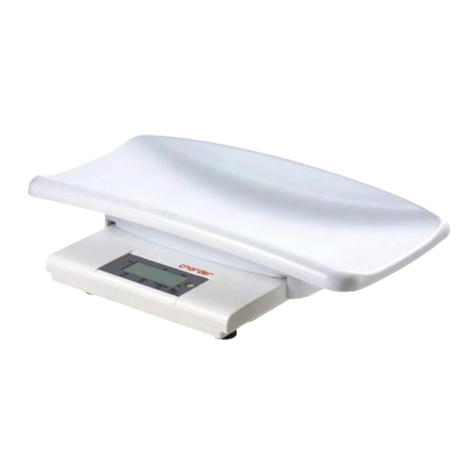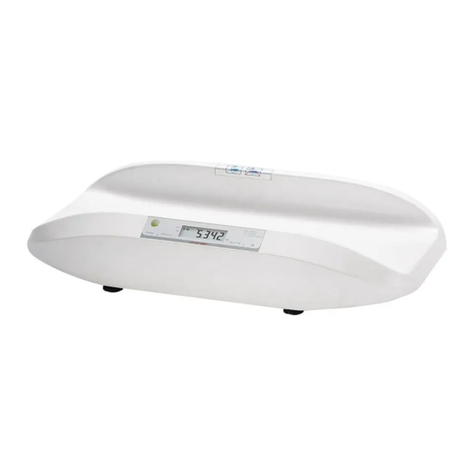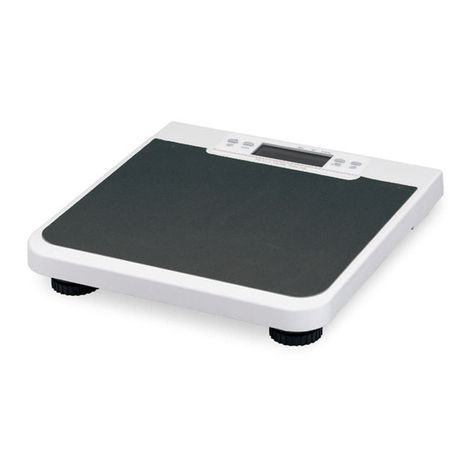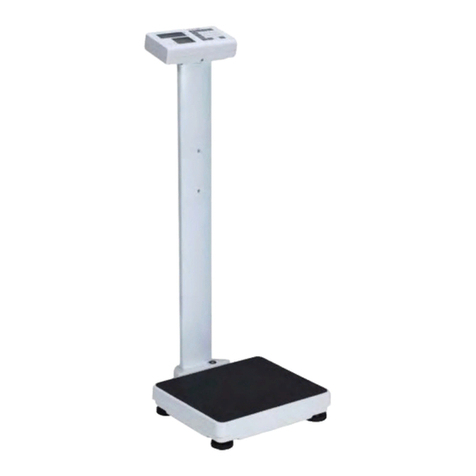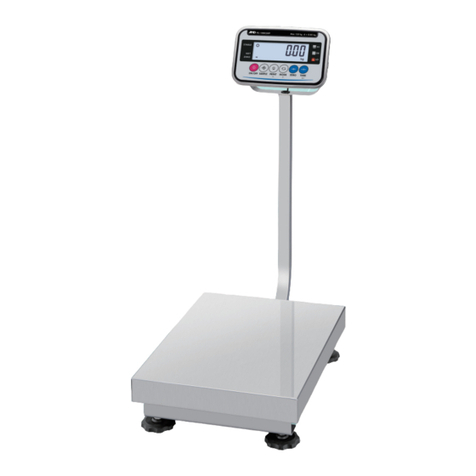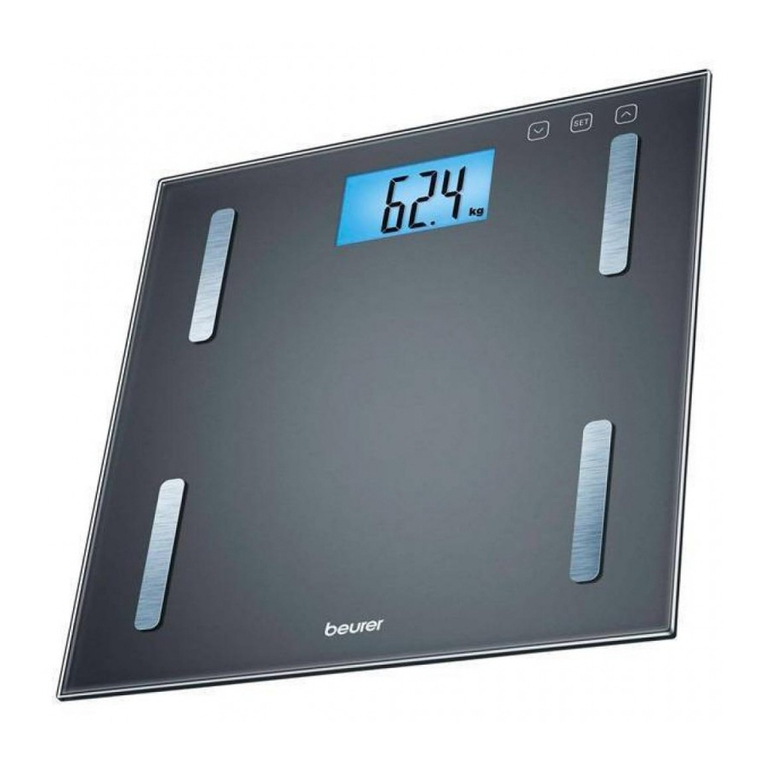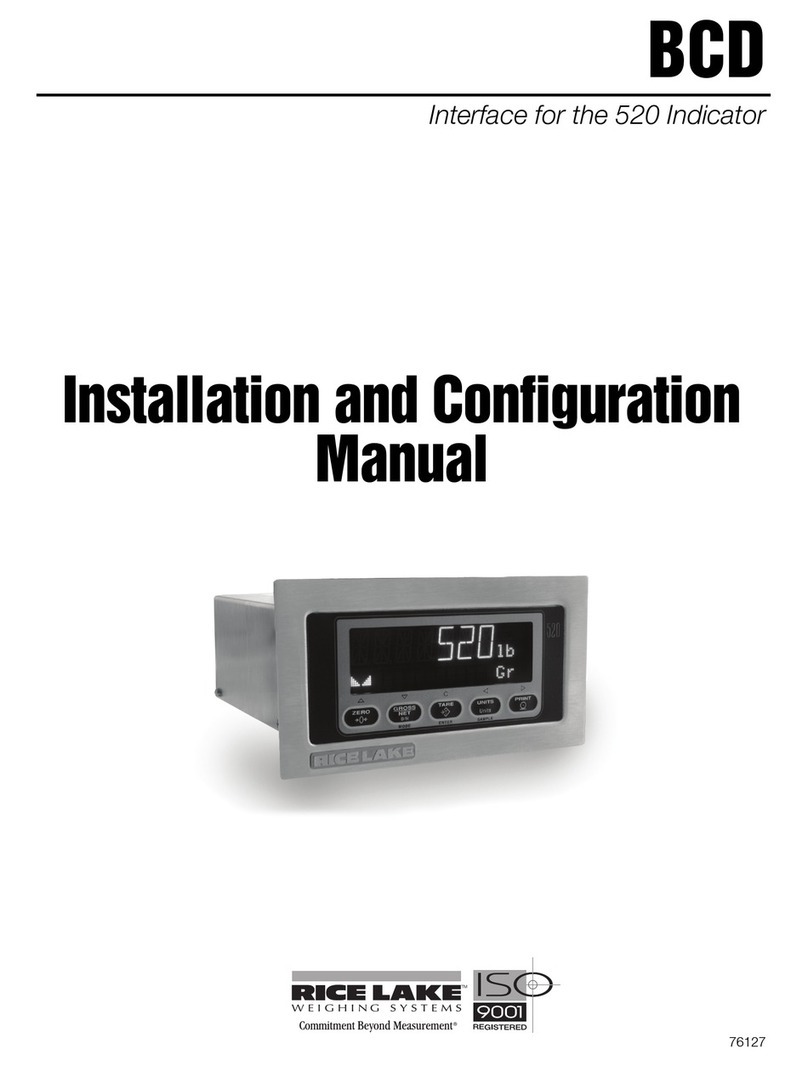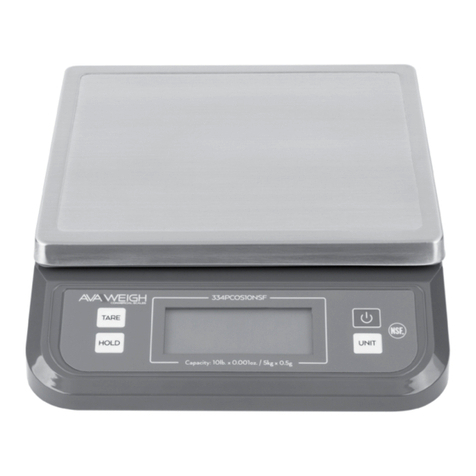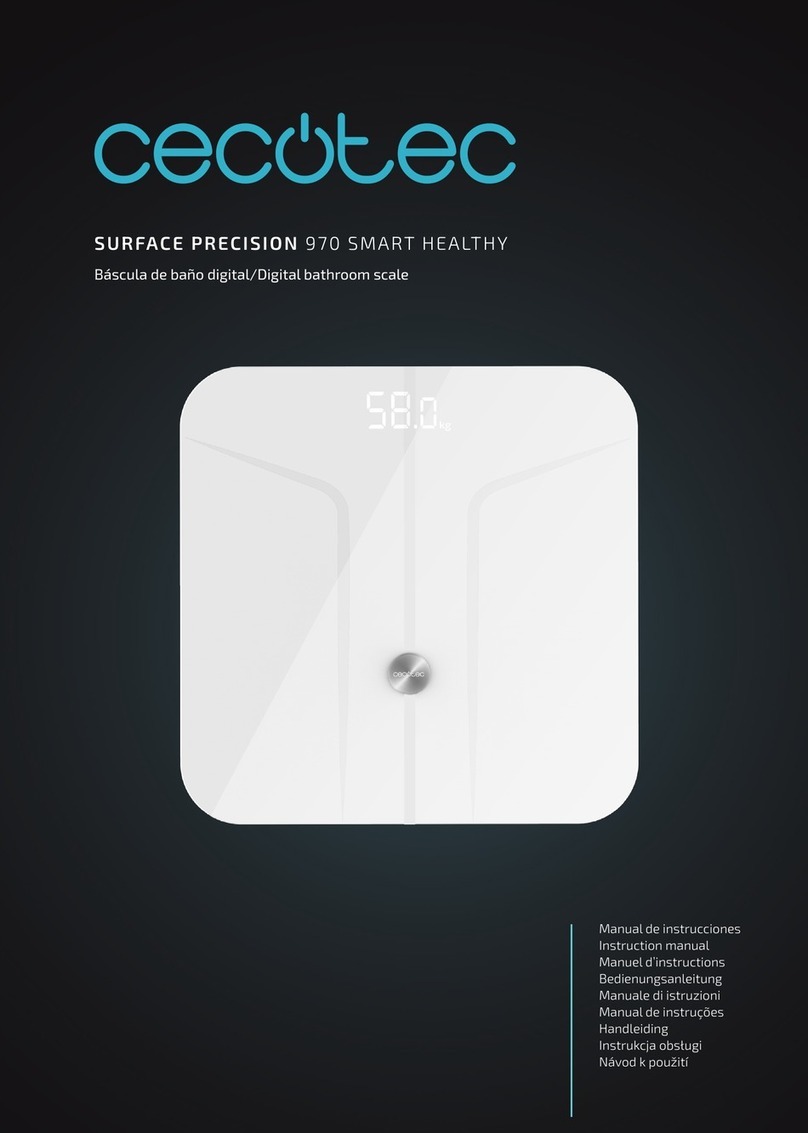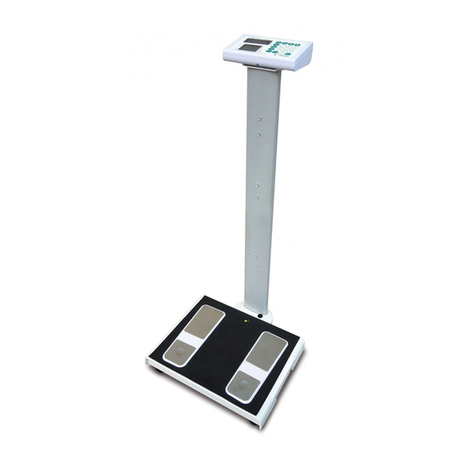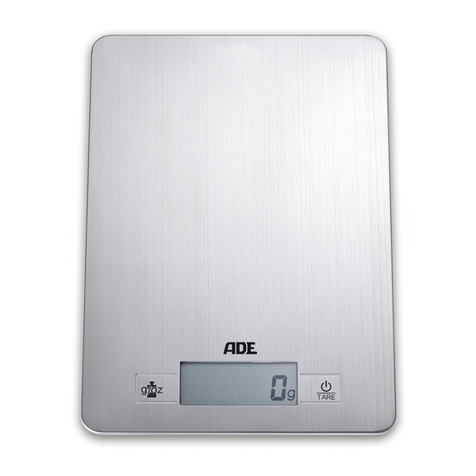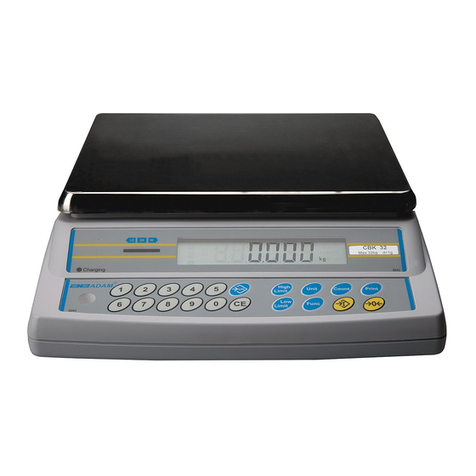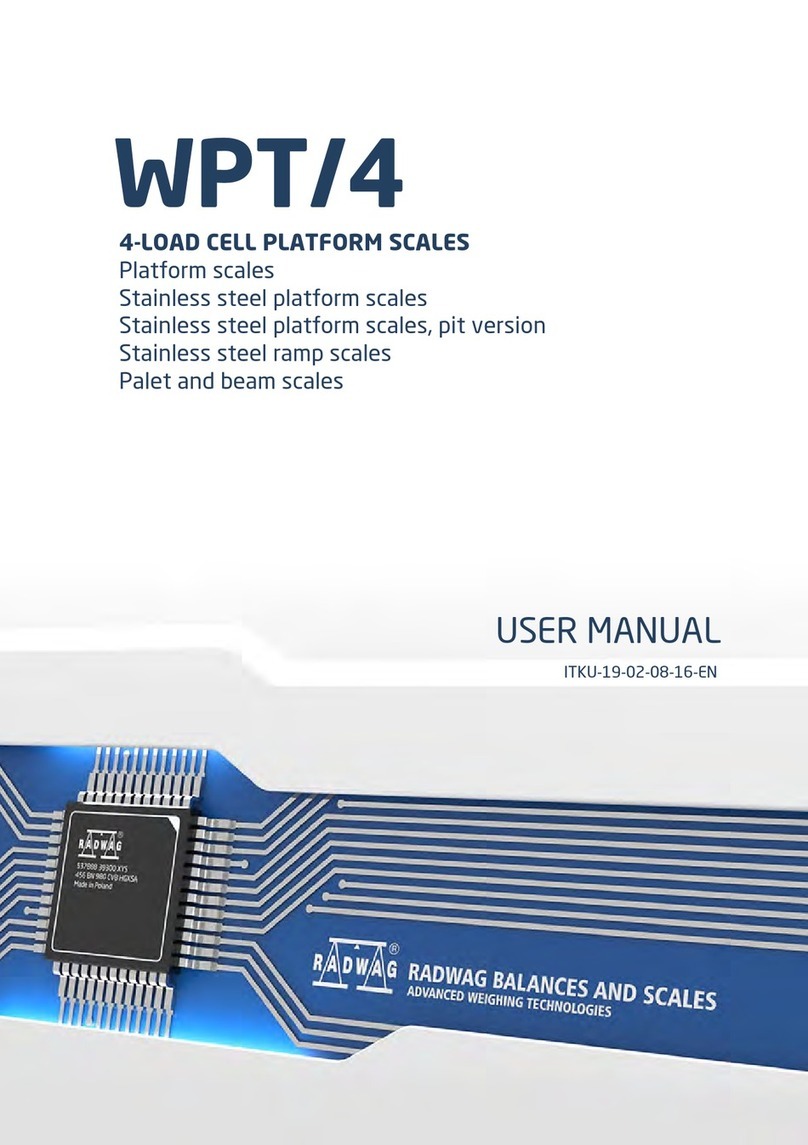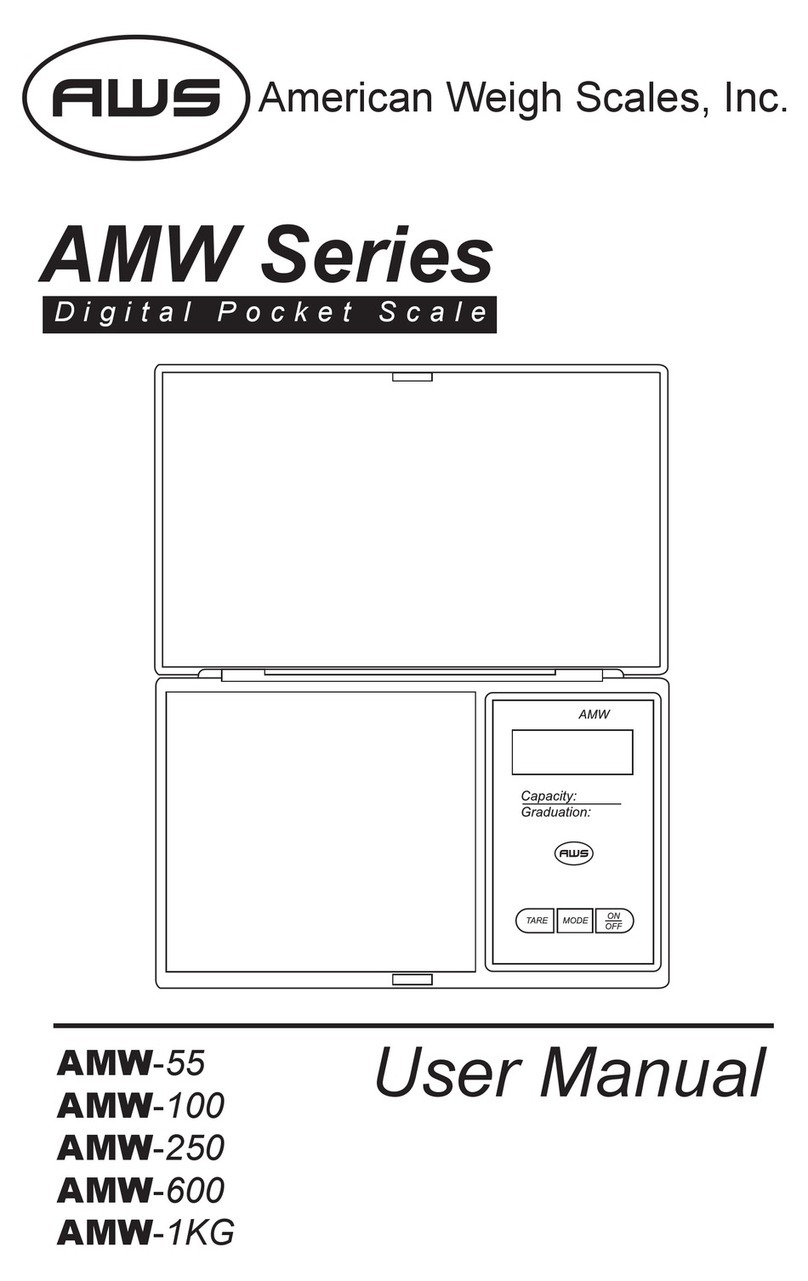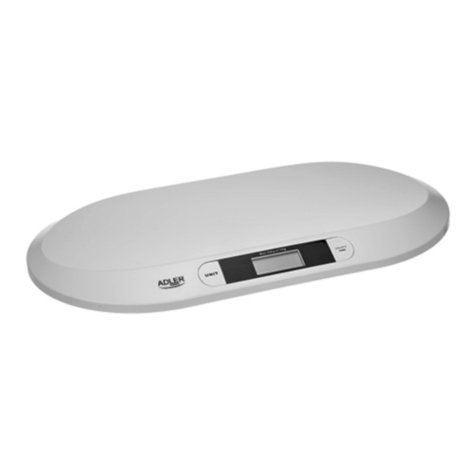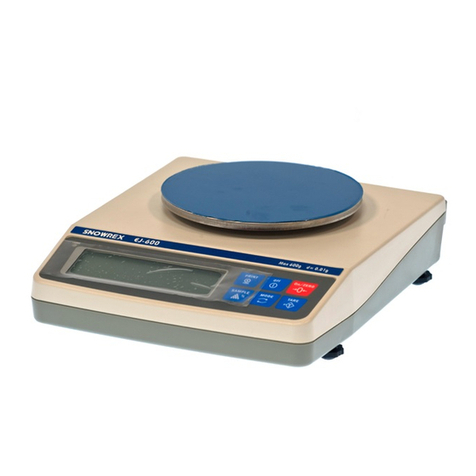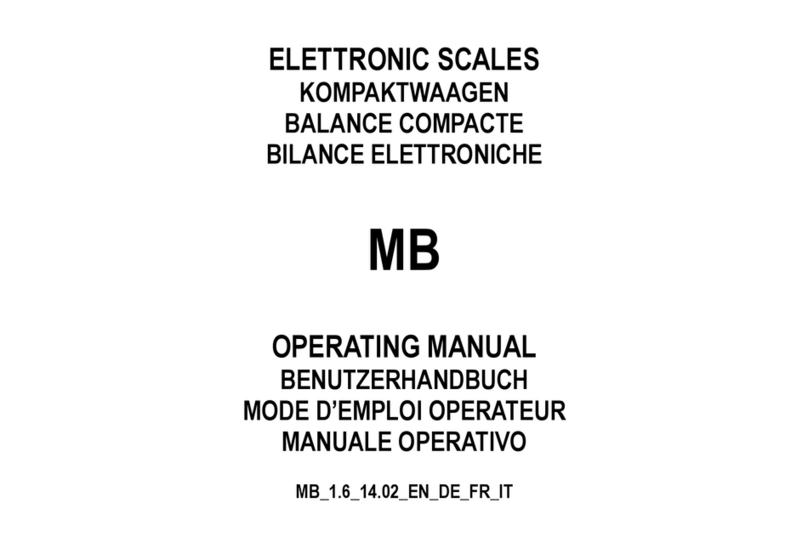Charder MHS2710 User manual

1
USER MANUAL
MHS2710
Lift Scale
Please keep the instruction manual at hand all the time for future reference.

2
Explanation of Graphic Symbols on Label/Packaging
Caution, consult
accompanying documents
before use
Authorized
representative in the
European Community
Manufacturer of medical
device
Indicates that device
conforms to
International
Organization of Legal
Metrology (Class III)
requirements
Manufacturing year of
medical device
Indicates that device
conforms to
2014/31/EU Non
Automatic Weighing
Instruments Directive.
Numerals change
according to year of
manufacture. (ex: "19"
for 2019)
Separate collection for waste
of electrical and electronic
equipment, in accordance
with Directive 2002/96/EC
Indicates that device
conforms to 93/42/EEC
as amended by
2007/47/EC Medical
Device Directive. Four
digit number refers to
Notified Body.
Device catalogue number
Indicates that device
conforms to
2014/31/EU Non
Automatic Weighing
Instruments Directive.
Four digit number
refers to Notified Body.
Manufacturer's batch or lot
number
Indicates that device is
a medical device
Serial number
Carefully read user
manual before
installation and usage,
and follow instructions
for use.
Unique Device Identifier
Medical electrical
equipment with Type B
applied part

3
Copyright Notice
Charder Electronic Co., Ltd.
No.103, Guozhong Rd., Dali Dist., Taichung City 41262 Taiwan
Tel: +886-4-2406 3766
Fax: +886-4-2406 5612
Website: www.chardermedical.com E-mail: info_cec@charder.com.tw
Copyright© Charder Electronic Co., Ltd. All rights reserved.
This user manual is protected by international copyright law. All content is
licensed, and usage is subject to written authorization from Charder
Electronic Co., Ltd. (hereinafter Charder) Charder is not liable for any
damage caused by a failure to adhere to requirements stated in this
manual. Charder reserves the right to correct misprints in the manual
without prior notice, and modify the exterior of the device for quality
purposes without customer consent.
Charder Electronic Co., Ltd.
No. 103, Guozhong Rd., Dali Dist.,
Taichung City, 412 Taiwan

4
CONTENTS
I. Safety Notes .......................................................................... 5
A. General Information .............................................................5
B. EMC Guidance and Manufacturer's Declaration.........................8
II. Installation..........................................................................12
A. General Warnings............................................................... 12
B. Inserting Batteries ............................................................. 15
III. Indicator and Key Functions ..............................................16
IV. Using Device .......................................................................18
A. Basic Operation ................................................................. 18
B. Hold ................................................................................. 18
C. BMI.................................................................................. 19
D. Tare ................................................................................. 19
V. Device Setup ........................................................................20
VI. Wireless Connection ...........................................................21
VII. Troubleshooting ................................................................21
VIII. Product Specifications .....................................................23
A. Device Information ............................................................ 23
B. Technical Data for Joints ..................................................... 24
IX. Declaration of Conformity ...................................................28

5
I. Safety Notes
A. General Information
Thank you for choosing this Charder Medical device. It is designed to be
easy and straightforward to operate, but if you encounter any problems
not addressed in this manual, please contact your local Charder service
partner.
Before beginning operation of the device, please read this user manual
carefully, and keep it in a safe place for reference. It contains important
instructions regarding installation, proper usage, and maintenance.
Intended Use
This device is intended to measure the weight of subjects with limited
mobility for professional diagnosis of weight-related issues.
General Handling
Ensure all parts are properly locked and tightened before operating
the device.
Safety Instructions
Before putting device into use, please read this user manual carefully. It
contains important instructions for installation, usage, and maintenance
of device.
The manufacturer shall not be liable for damages caused by failure to
heed the following instructions:
Batteries should be kept away from children. If swallowed, promptly
seek medical assistance.
Expected service life: 5 years.
Always comply with appropriate regulations when using electrical
components under increased safety requirements.
Improper installation will render the warranty null and void.
The device is intended for indoor use only.
Observe permissible ambient temperatures for use
Device meets requirements for electromagnetic compatibility. Do not
exceed the maximum values specified in the applicable standards.
This device should only be attached to compatible patient lift

6
systems
Do not lean against device, to minimize falling risk.
Device must not be modified. Any unauthorized modification will void
warranty, and Charder is not responsible for resulting damage.
Do not exceed maximum loading capacity.
Maximum safe overload is 6 times maximum capacity of device.
(device will beep when loading exceeds maximum capacity)
Environmental
All batteries contain toxic compounds; batteries should be disposed
of via designated competent organizations. Batteries should not be
incinerated.
The optimum operating temperature for the device is 0℃to +40℃;
although it will operate at higher and lower temperatures, battery
life will adversely be effected.
Cleaning
Device surface should be cleaned using alcohol-based wipes.
Corrosive cleansing liquids should not be used. Pressure-washers
should not be used.
Do not use large amounts of water when cleaning the device, as it
may cause damage to the internal electronics.
Maintenance
Please contact your local Charder distributor for regular maintenance
and calibration.
Device does not require routine maintenance. However, regular
checking of accuracy is recommended; frequency to be determined
by level of use and state of device. If results are inaccurate, please
contact local distributor.
Warranty/Liability
If Charder is responsible for a fault or defect present upon receipt of
the unit, Charder shall either repair the fault, or supply a
replacement unit. Should the repairs or replacement delivery fail,
statutory provisions shall be valid. The period of warranty shall be
two years, beginning on the date of purchase. Please retain your
receipt as proof of purchase.
No responsibility shall be accepted for damage caused through any
of the following reasons: unsuitable or improper storage or use,
incorrect installation or commissioning by the owner or third parties,
natural wear and tear, changes or modifications, incorrect or
negligent handling, chemical, electrochemical, or electrical

7
interference, unless damage is attributable to negligence on the part
of Charder.
This device does not contain any user-maintained parts. All
maintenance, technical inspections, and repairs should be conducted
by an authorized Charder service partner, using original Charder
accessories and spare parts. Charder is not liable for any damages
arising from improper maintenance or usage. Dismantlement of the
device will void the warranty.
Disposal
This product is not to be treated as regular household waste, but
should be taken to a designated collection points for electronics.
Further information should be provided by local waste disposal
authorities.
Warning
Keep device away from liquids.
Do not under any circumstances dismantle or alter the device, as this
could result in electric shock or injury as well as adversely affect the
precision of measurements.
Do not place the device in direct sunlight, or in close proximity to an
intense heat source. Excessively high temperatures may damage the
internal electronics.
Incident Reporting
Any serious incident that has occurred in relation to the device
should be reported to the manufacturer, EU representative (if device
is used in EU member state), and competent authority of
user/subject's member state.

8
B. EMC Guidance and Manufacturer's Declaration
Guidance and manufacturer’s declaration-electromagnetic emissions
The MHS2710 Lift Scale is intended for use in the electromagnetic environment specified
below. The customer or the user of the device should assure that it is used in such an
environment.
Emission test
Compliance
Electromagnetic
environment-guidance
RF emissions CISPR 11
Group 1
The device uses RF energy only for
its internal function. Therefore, its
RF emissions are very low and are
not likely to cause any interference
in nearby electronic equipment.
RF emissions CISPR 11
Class B
The device is suitable for use in all
establishments, including domestic
establishments and those directly
connected to the public low-voltage
power supply network that supplies
buildings used for domestic
purposes.
Harmonic emissions IEC
61000-3-2
Class A
Voltage fluctuations /flicker
emissions IEC 61000-3-3
Compliance

9
Guidance and manufacturer’s declaration-electromagnetic immunity
The MHS2710 Lift Scale is intended for use in the electromagnetic environment specified
below. The customer or the user of the device should assure that it is used in such an
environment.
Immunity test
IEC 60601
test level
Compliance
level
Electromagnetic
environment-guidance
Electrostatic
discharge(ESD)
IEC 61000-4-2
±8 kV contact
±2 kV, ± 4 kV,
± 8 kV, ± 15 kV
air
±8 kV contact
±2 kV, ± 4 kV,
± 8 kV, ± 15 kV
air
Floors should be wood, concrete
or ceramic tile. If floors are
covered with synthetic material,
the relative humidity should be
at least 30%
Electrical fast
transient/burst
IEC 61000-4-4
± 2kV for
power supply
lines
+ 1kV for
input/output
lines
+ 2kV for power
supply lines
+ 1kV for
input/output
lines
Mains power quality should be
that of a typical commercial or
hospital environment.
Surge IEC
61000-4-5
± 1kV line(s) to
line(s)
± 2kV line(s) to
earth
+ 1kV line(s) to
line(s)
+ 2kV line(s) to
earth
Mains power quality should be
that of a typical commercial or
hospital environment.
Voltage Dips,
short interruptions
and voltage
variations on
power supply
input lines IEC
61000-4-11
0% UT for 0,5
cycle
0% UT for 1
cycle
70% UT(30%
dip in UT) for
25 cycles
0% UT for 5 s
0% UT for 0,5
cycle
0% UT for 1
cycle
70% UT(30%
dip in UT) for 25
cycles
0% UT for 5 s
Mains power quality should be
that of a typical commercial or
hospital environment. If the
user of the device requires
continued operation during
power mains interruptions, it is
recommended that the device
be powered from an
uninterruptible power supply or
a battery.
Power
frequency(50/60
Hz) magnetic field
IEC 61000-4-8
30 A/m
30 A/m
The device power frequency
magnetic fields should be at
levels characteristic of a typical
location in a typical commercial
or hospital environment.
NOTE UT is the a.c. mains voltage prior to application of the test level.

10
Guidance and manufacturer’s declaration-electromagnetic immunity
The MHS2710 Lift Scale is intended for use in the electromagnetic environment specified
below. The customer or the user of the device should assure that is used in such an
environment.
Immunity test
IEC 60601 test
level
Compliance
level
Electromagnetic
environment-guidance
Conducted RF
IEC 61000-4-6
Radiated RF IEC
61000-4-3
3 Vrms
150 KHz to 80 MHz
6 V in ISM bands
between 0,15 MHz
and 80 MHz
80 % AM at 1 kHz
3 V/m
80MHz to 2,7 GHz
3 Vrms
150 KHz to 80
MHz
6 V in ISM
bands between
0,15 MHz and
80 MHz
80 % AM at 1
kHz
3 V/m
80MHz to 2,7
GHz
Portable and mobile RF
communications equipment
should be used no closer to any
part of the device including
cables, than the recommended
separation distance calculated
from the equation applicable to
the frequency of the
transmitter.
Recommended separation
distance:
d = 1,2 √P
d = 1,2 √P 80MHz to 800 MHz
d = 2,3 √P 800MHz to 2,5 GHz
Where P is the maximum output
power rating of the transmitter
in watts (W) according to the
transmitter manufacturer and d
is the recommended separation
distance in metres (m).
Field strengths from fixed RF
transmitters, as determined by
an electromagnetic site surveya,
should be less than the
compliance level in each
frequency rangeb.
Interference may occur in the
vicinity of equipment marked
with the following symbol:

11
NOTE1 At 80 MHz and 800 MHz, the higher frequency range applies.
NOTE2 These guidelines may not apply in all situations. Electromagnetic propagation is
affected by absorption and reflection from structures, objects and people.
a Field strengths from fixed transmitters, such as base stations for radio (cellular/cordless)
telephones and land mobile radios, amateur radio, AM and FM radio broadcast and TV
broadcast cannot be predicted theoretically with accuracy. To assess the electromagnetic
environment due to fixed RF transmitters, an electromagnetic site survey should be
considered. If the measured field strength in the location in which the device is used
exceeds the applicable RF compliance level above, the device should be observed to
verify normal operation. If abnormal performance is observed, additional measures may
be necessary, such as re-orienting or relocating the device.
b Over the frequency range 150 kHz to 80 MHz, field strengths should be less than 3 V/m.
Recommended separation distance between portable and mobile RF
communications equipment and the MHS2710 Lift Scale
The device is intended for use in an electromagnetic environment in which radiated RF
disturbances are controlled. The customer or the user of the device can help prevent
electromagnetic interference by maintaining a minimum distance between portable and
mobile RF communications equipment (transmitters) and the device as recommended
below, according to the maximum output power of the communications equipment.
Rated maximum
output power of
transmitter
W
Separation distance according to frequency of
transmitter m
150 kHz to 80
MHz
d =1,2√P
80 MHz to 800
MHz
d =1,2√P
800 MHz to 2,5
GHz
d =2,3√P
0,01
0,12
0,12
0,23
0,1
0,38
0,38
0,73
1
1,2
1,2
2,3
10
3,8
3,8
7,3
100
12
12
23
For transmitters rated at a maximum output power not listed above, the recommended
separation distance d in metres (m) can be estimated using the equation applicable to the
frequency of the transmitter, where p is the maximum output power rating of the

12
transmitter in watts (W) according to the transmitter manufacturer.
NOTE1 At 80 MHz and 800 MHz, the separation distance for the higher frequency range
applies.
NOTE2 These guidelines may not apply in all situations. Electromagnetic propagation is
affected by absorption and reflection from structures, objects and people.
II. Installation
A. General Warnings
To ensure safety, correct assembling procedure must be
followed.
Tools required: hexagon screwdriver, torque wrench
1. Hold one side of device securely
2. Secure screws from other side. Repeat for both sides (ex: first secure
left, then right, or vice versa).
NOTE: torque setting must be 18kgf-cm ± 1kgf-cm
3. DO NOT use lift scale if screws are loose
4. Screws must be fully tightened before use

13
Set Screws
Set screws are used to fix direction of lift scale, and should not be
loosened. Ensure screws are tight before use.
Set screw

14
Tilt angle
Tilt angle exceeding 3 degrees will result in inaccurate reading.
Horizontal rotation
Although not strictly necessary, device should ideally be installed on lift
system utilizing 360-degree swivel bearing. After assembly at lifter,
rotation should ideally be conducted using lift system rather than device.
3∘
3∘

15
B. Inserting Batteries
The device utilizes a rechargeable battery pack.
When power is low, please recharge the battery pack using the micro-USB
port. When the port light is blinking red, battery is being charged. When
the port light is stable green, battery is fully charged.
Charging Port

16
HOLD
NET
GROSS
kg
III. Indicator and Key Functions
Display
: Stable
: Negative weight
: Zero
: Low battery
Key Function
1. : Power on or power off. Reset display to 0.0 kg display (can be
used if within ±2% of full capacity). Press and hold for 3 seconds to turn
off.
2. : Determine stable weighing value - used when weight is unstable.
HOLD
NET
GROSS
kg

17
Press and hold for 3 seconds to enter BMI mode.
3. : Switch between kg and lb. Last-used unit will be stored in
memory. (non-functional on OIML model)
Indicator
1. HOLD: indicates if hold is active
2. NET: indicates if current result is net weight
3. GROSS: indicates if current result is gross weight
4. kg: indicates if results are in kg

18
IV. Using Device
A. Basic Operation
Switch on the device using key. The device will automatically
perform self-calibration, displaying software version.
Once "0.00 kg" appears on indicator, device is ready for measurement.
Note: If "0.00 kg" does not display on indicator, press key to zero
the device. This function can be used for weight within ±2% of full
capacity.
Guide subject to sit upon sling (or other device connected to lift). After
the weight has stabilized, the "stable" symbol will appear on indicator.
Note: If subject's weight exceeds scale capacity (including tare),
indicator will display "Err" prompt due to overload.
B. Hold
The hold function determines average weight, designed to be used if
subject's weight will not stabilize (ex: an active child).
Note: if fluctuation is too severe, average weight determination will be
difficult and hold may not function correctly
1. Switch on the device normally.
2. Press the key. "HOLD" will be displayed on the indicator.
3. Conduct measurement as usual.
4. After a few seconds, the average weight will be displayed on the
indicator. This weight will be locked - at this point, subject can step off
from device.
5. To release the locked weight, press the key again to return to the
device to normal mode.
Note: Hold function can be activated before or after subject stands on
measurement platform. However, if subject finds it difficult to stand still,
we recommend activating Hold after subject stands on platform.

19
C. BMI
1. In normal mode, press and hold key for 3 seconds to enter BMI
mode.
2. Display will show last recorded height. Digits will flash.
3. Press key to increase, to decrease. Press and hold to speed
up.
4. After inputting height, press to confirm.
5. Proceed to weigh subject as usual. Indicator will display weight, height,
and BMI.
NOTE: Hold function can be used at this time if weight is unstable
6. Press key to return to normal mode.
Category
BMI (kg/m2)
Risk of obesity-related disease
Under
< 18.5
Low
Normal
18.5-24.9
Average
Over
24.9-29.9
Slightly Increased
Obese I
30.0-34.9
Increased
Obese II
35.0-39.9
High
Obese III
> 40
Very High
(World Health Organization adult BMI standards)
NOTE: though BMI is calculated in the same way, subjects under the age
of 18 should use separate standards for interpretation, in comparison
with percentile charts for their age group.
D. Tare
The tare function allows the user to deduct the weight of objects from the
device's measurement result.
1. Place object that needs to be tared onto sling.
2. Press key after stable symbol appears on indicator. Display will
indicate "0.00 kg".
3. Guide subject (plus tared object) to be weighed upon sling. Conduct
measurement.
4. To clear tare value, remove all objects from measurement platform,

20
and press key.
V. Device Setup
3-key model
When the device is switched on, press the key 3 times while
pressing and holding key. Display will show "SET”, followed by
"A_OFF” (first option in setting menu).
In device setup menu:
[HOLD] to toggle next menu option
[UNIT] to toggle previous menu option
to confirm selection / enter submenu
Auto Power-Off: Instruct device to shut off automatically after a certain
period of time.
Auto off options: 60 sec / 120 sec / 180 sec / 240 sec / 300 sec / off
Press [HOLD] to toggle between time options, and to confirm
selection.
Buzzer/Beep:
When function is turned on, beeping noise will be made when: indicator is
turned on, keys are pressed, and weight is stable.
Press [HOLD] to toggle between on/off, and key to confirm
selection.
Table of contents
Other Charder Scale manuals
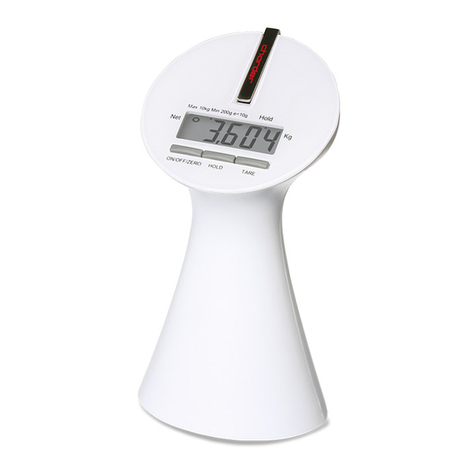
Charder
Charder MS4400I User manual
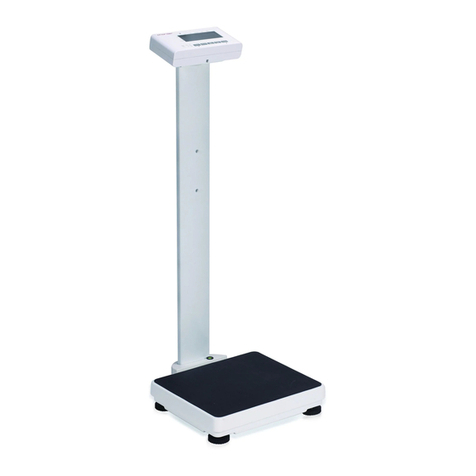
Charder
Charder MS4900 User manual
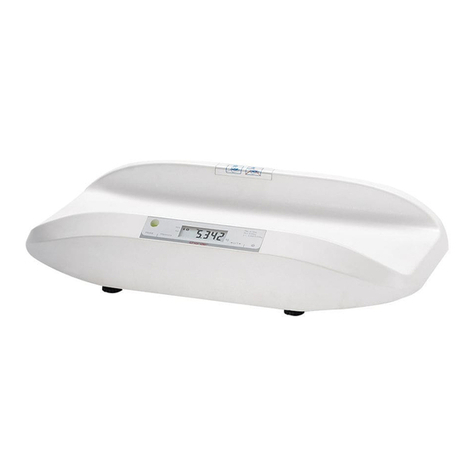
Charder
Charder MS 5900 User manual

Charder
Charder MS 2100 User manual
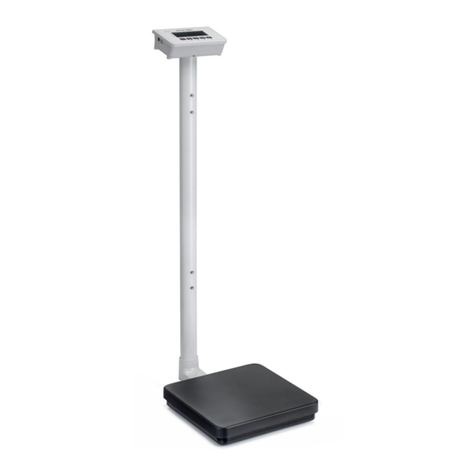
Charder
Charder MS3450 User manual
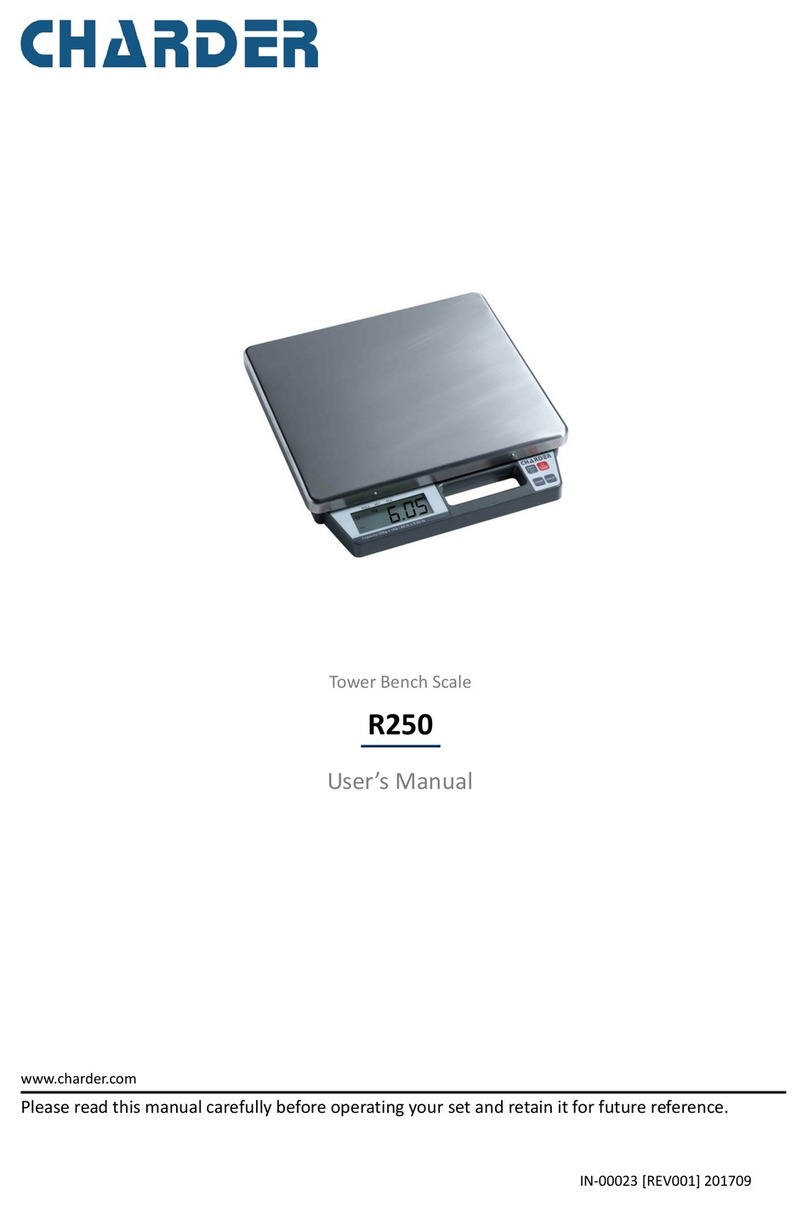
Charder
Charder R250 Series User manual
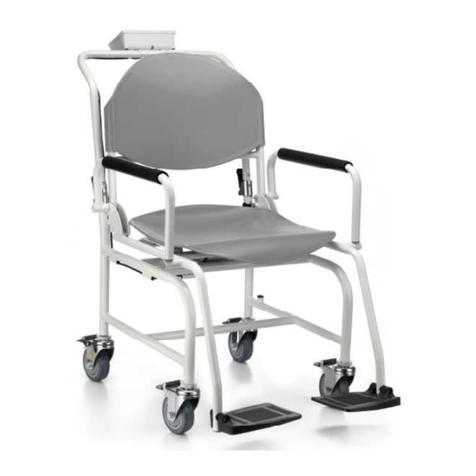
Charder
Charder MS 5460 User manual
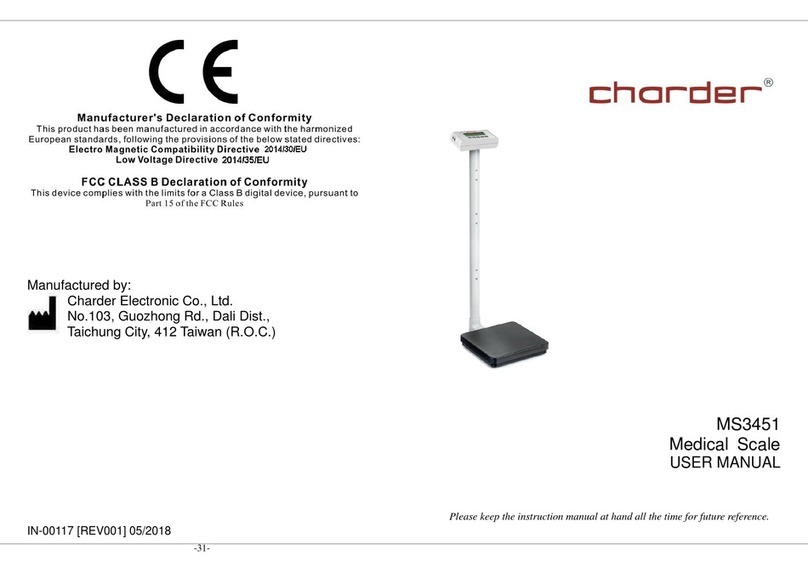
Charder
Charder MS3451 User manual

Charder
Charder R240 User manual
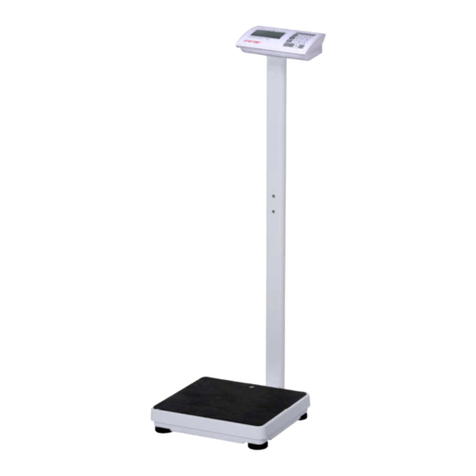
Charder
Charder MS 4940 User manual
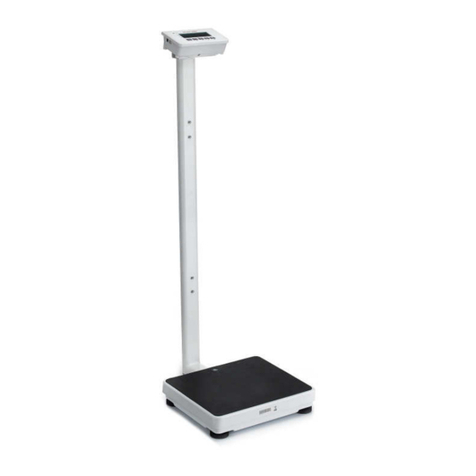
Charder
Charder MS 4971 User manual
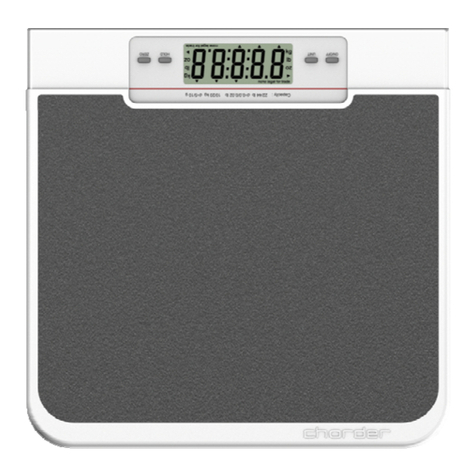
Charder
Charder MS 6111 User manual
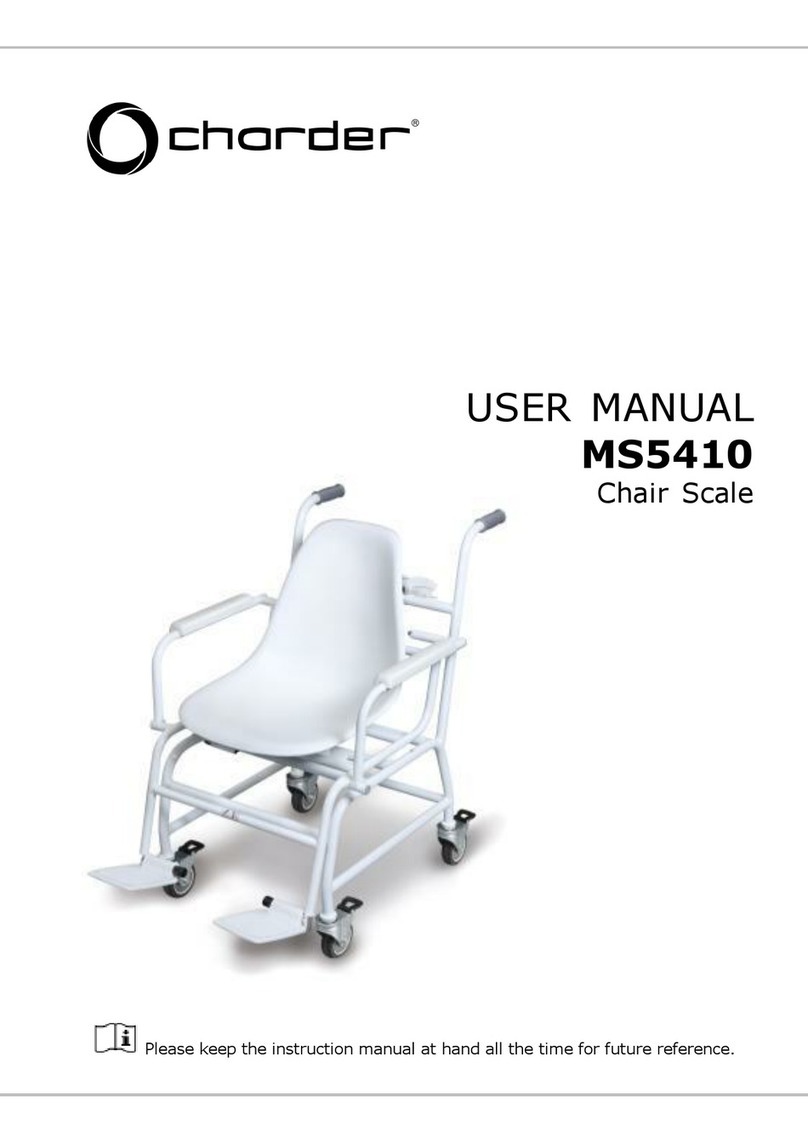
Charder
Charder MS5410 User manual
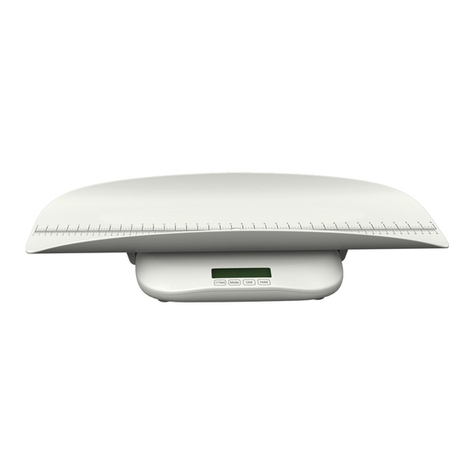
Charder
Charder CUPID 3 User manual
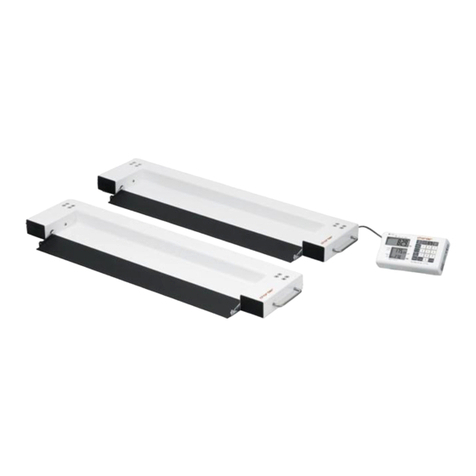
Charder
Charder MS 6000 User manual
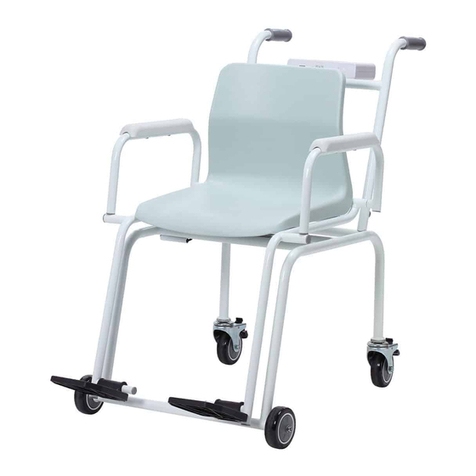
Charder
Charder MS5810 User manual
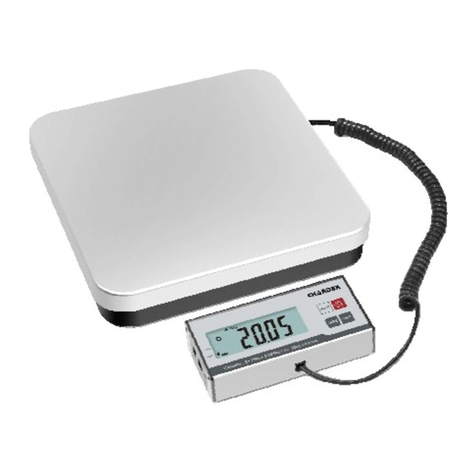
Charder
Charder R260 User manual
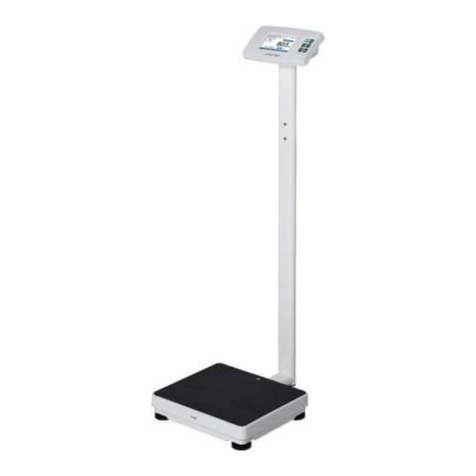
Charder
Charder MS4980 User manual
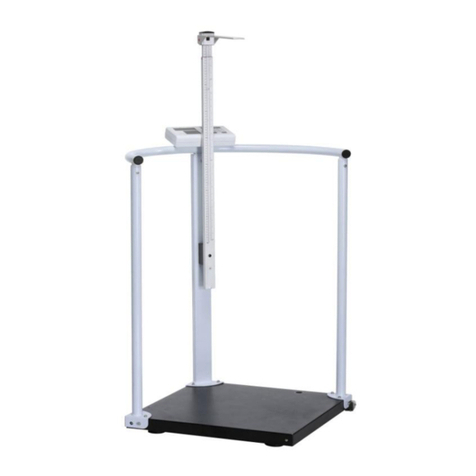
Charder
Charder MS2504 User manual

Charder
Charder R460 User manual
